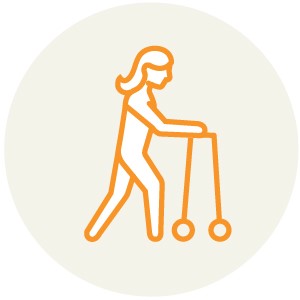Pedestrian characteristics
On this page
Definition of a pedestrian
The term ‘pedestrian’ includes:
- people on foot
- people with a disability
- people in or on wheeled recreational devices (WRDs)
- people using personal mobility devices (PMDs)
- People using motorised mobility devices (MMDs).
TMR endorsed guidance
- Queensland Walking Strategy 2019-2029, Summary, page 4 (Department of Transport and Main Roads, 2019)
Other useful resources
- Skateboards, foot scooters and similar (Queensland Government, 2022)
- Rules for personal mobility devices (Queensland Government, 2022)
- Transport Legislation (Road Safety and Other Matters) Amendment Bill 2022 (Queensland Government, 2022)
- Guide to Traffic Management Part 4: Network Management Strategies, Section 4.7 Pedestrian Networks (Austroads, 2020)
People with additional mobility considerations
Design should cater for all people who walk, including:
- older people
- children
- people with a disability.
You can find more information in the Universal Access section of this resources guide.
Designing footpaths for everyone
TMR endorsed guidance
- Accessibility and Inclusion Strategy (Department of Transport and Main Roads, 2020)
Other useful resources
- Guide to Traffic Management Part 7: Activity Centre Traffic Management, Appendix G Design Considerations for Pedestrians with Special Needs (Austroads, 2020)
- AS 1428.1 – 2009 Design for access and mobility Part 1: General Requirements for access – New building works
- Safer Road Design for Older Pedestrians (Mantilla & Burtt, 2016)
- Global Street Design Guide, 6.3 Designing for pedestrians (Global Designing Cities Initiative, 2016)
- Designing Streets for Kids (Global Designing Cities Initiative, 2020)
Walking distance and speed
Walking speed depends on age and ability, as well as the purpose and length of the trip. It is influenced by pavement quality and topography, and the size, altitude, and climate of a location.
Walking speeds range from 0.3 m/s–1.75 m/s or 1 km/h–6 km/h.
TMR endorsed guidance
- TRUM Volume 1 Part 6, Intersections, Interchanges and Crossings, Section 8.1-1 Pedestrian crossing facility selection (Department of Transport and Main Roads, 2019)
Other useful resources
- Australasian Pedestrian Crossing Facility Selection Tool and User Guide (Austroads, 2020)
- Global Street Design Guide, 6.3 Designing for pedestrians (Global Designing Cities Initiative, 2016)
- Pedestrian Planning and Design Guide, Section 3.4 Walking Speed (NZ Transport Agency, 2009)
Pedestrian operating space
Operational widths are:
- pedestrian with ambulant disability (1.0m)
- pedestrian in wheelchair (1.2m)
- pedestrian in wheelchair passing pram (1.5m)
- two pedestrians in wheelchairs passing (1.8m)
- pedestrian and bike rider passing (2.0m).
TMR endorsed guidance
RPDM Edition 2: Volume 3, Supplement to Austroads Guide to Road Design Part 6A: Paths for Walking and Cycling, Section 3 Path User Considerations (Department of Transport and Main Roads, 2020)
Other useful resources
- Austroads Guide to Road Design Part 6A: Paths for Walking and Cycling, Section 3.2 Operating space (Austroads, 2017)
- Global Street Design Guide, 6.3.1 Designing for pedestrians - overview (Global Designing Cities Initiative, 2016)
- Walking Space Guide, COVID-19 Walking Space Requirements, page 14 (Transport for New South Wales, 2020)
- Last updated 6 September 2023

